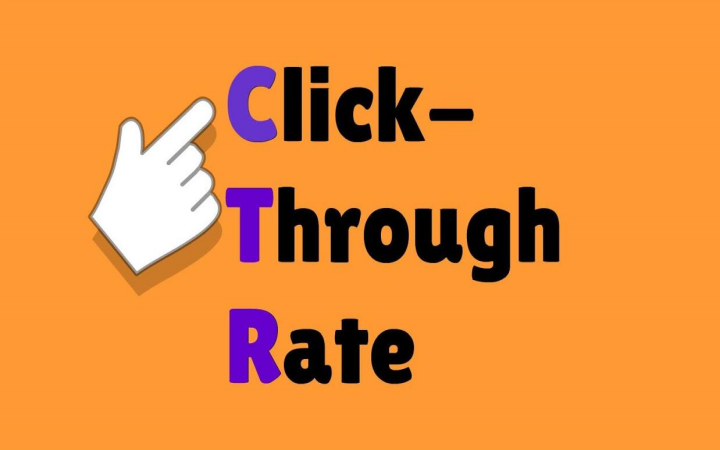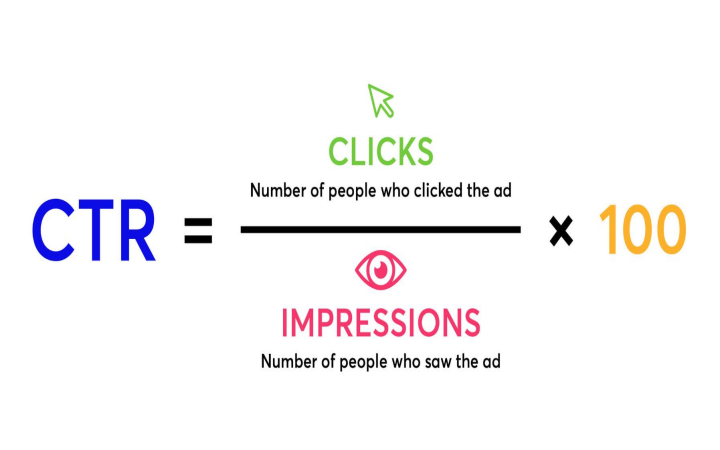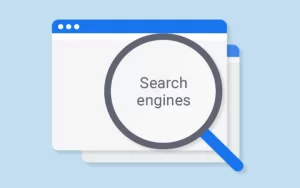With all the noise in the so-called digital gladiator, the click-through rate (CTR) thrives as a digital Mount Everest. Every digital advertising, every email campaign, and every webpage, CTR is the heartbeat — a vital metric portraying the audience engagement level. To put it in simple terms, CTR tells you how effective your ads, emails, and webpages are but at the same time whether they contain such content that the audience can connect and convert. The question here is what is CTR and in this ultimate guide, Eama will give you all about the email marketing performance metrics and the click-through rate. Are you excited to go beyond different but possible scenarios?

Table of Contents
- What is Click-Through Rate (CTR)?
- Why is Click-Through Rate Important?
- What is a Good Click-Through Rate (CTR)?
- Factors that influence the click-through rate of advertisements
- Tips to Improve Your Click-Through Rate
- How to Track Click-Through Rate
- FQAs
- Conclusion
What is Click-Through Rate (CTR)?
Click-through rate is the percentage of the number of people that clicks the link and this percentage displays among all the viewers the number of real clicks. It’s a metric that combines impressions and clicks to figure out if readers are clicking.
Digital channels work together to increase CTR:
- Search Ads CTR: For search engine ads, it tells how often the ad they see is clicked by the user.
- Email CTR: Email campaigns engage by the relation between delivered emails and those sharing clicks.
- Organic Search CTR: SEO counts clicks to search impressions in Google Search Console to assess performance.
CTR Calculation
Determining the response to an ad will be relatively simple, and the CTR reckoning will be done as follows. You can find it by dividing the clicks column by the impressions column. Then multiply the answer by 100, to convert the result to percentage by removing the decimal point of permanent numbers.

- CTR = (Clicks / Impressions) x 100
Historical Context of CTR
Since the era of advertising online first took place, CTR has existed wonderfully. Originally, it showed advertisers the likelihood of their being clicked on, with the help of the pay-per-click (PPC) model. Still, behemoths like Google do not only use it to judge ad quality and relevance but also to measure significance within a certain timeline.
Why is Click-Through Rate Important?
CTR is an essential measure for many reasons:
- High-Quality Score: Platforms like Google Ads attribute CTR significantly to the overall Quality score of ads. The quality score is directly proportional to the position and cost of advertising an ad (CPC).
- Customer Engagement: Visibly a high CTR signifies that the content is strikingly good, i.e. the message is very strong. It catches the consumer’s eye which in turn directs to the website hence leading to the final transaction.
- CTR: Ad Performance Benchmark can be used to help advertisers monitor the effects of the ads and understand which of the ads is practical to proceed and they can work on improving it.
- SEO Implications: It has not been confirmed that having a high CTR is a direct ranking factor. However, having a high CTR will positively benefit organic searches since it suggests that the content uses the format and is interesting and derived from the original content of the search.
What is a Good Click-Through Rate (CTR)?
One of the most pressing questions that perplex marketers is: “When does a CTR become good?” There are several factors in answering the question, and the response is not limited to a single aspect but also takes into consideration different roles and objectives. Even though the specifics of 100% precision will depend on your sector and the platforms you are using, there are some general standing points:
- CTR greater than or equal to 2% is marked as good
- With a figure above 4%, CTR is said to be on the strong side
- Longer content is often perceived as a content age of over 10%
Your ideal CTR ought to resonate with the main goals of your campaign. Assess it against industry averages to better gauge its performance. Also, when it comes to the search ad, ”good” CTR assumes the form of the competitors. CTR.
Factors that influence the click-through rate of advertisements
The CTR can be affected by a multitude of different variables which can escalate from advertisement material and location to different strategies for marketing.
- Relevance: Advertising material is relevant if it conveys what the user is trying to say and is context-related. The rest of the relevant ads that are intended for your targeting will not only be more engaging but they will also have a higher click-through rate.
- Advertisement Position: Advertisements located higher in the results of the search engine results page (SERP) are much more likely to receive these higher click-through rates because they are highly visible and are more likely to be found.
- Visual Appeal: In advertisements presented visual images and colors are two of the visual elements that have the greatest influence on the viewer. An ad that invokes the visual sense will lead to an increase in the click-through ratio.
- Advertisement Copy: The texts your ad contains can be the first source of contact with your target market. A convincing and well-demonstrated ad copy that uses a striking call to action effectively encourages action from your audience.
- Keywords, Targeting, and Keywords: The use of popular keywords, combined with focused advertising will guarantee that your audience will be precisely hit by relevant ads at&nb sp; the right time.
- Landing Page Experience: Provided that the landing page can keep up the amount of interaction that the ad has set, you will be more likely to engage the click-through rate to increase.
Tips to Improve Your Click-Through Rate
The improvement of your CTR is not an issue, which you can resolve within a day only Nevertheless, the methods provided below will temporarily place you on a breakthrough path:
Craft Compelling Ad Copy
Your headline and copy in your banner are the main texts that you have to worry about. That’s where your potential buyer is at, but you need to respect them. Find out what is the biggest fears of your targeted audience and meanwhile describe the process into which the problem is redirected as a result of the product or service
Moreover, add some effective or emotional words to persuade the viewers to click through your site.
Optimize for the Right Keywords
The investigation of search terms is the beginning of successful CTRs. Make sure you utilize the tools to select your relevant optimal and effective keywords and make sure they fit in naturally with your ads.
Utilize Ad Extensions
Extensions prolong your advertisement with more details and additional CTAs. Sitelinks, callouts, and structured snippets of text can give which forms the advert is bypassed and which gets clicked.
Test Different Ad Formats
Experiment with different ad formats that can affect the amount of interaction your potential customers have with your business. Carousel ads, videos, and other interactive media will bring to light customers’ new habits
Implement Geotargeting and Ad Scheduling
Your advertising should be beautifully displayed right on time at the place, and you have to keep it relevant only to the interested people, which means timing.
A/B Test Your Ads
The cycle of testing the same ads in the customer base (A/B testing) leads to a better understanding of the parts of the ads (headlines, descriptions, or images) that are most effective, allowing for improvement.
Focus on Mobile Optimization
Given that a considerable amount of internet usage now comes from mobile phones, the ads that you provide must have a mobile version. This is a requirement for the ad content as well as the experience on the landing page.
How to Track Click-Through Rate
The understanding of CTR comes from accurate tracking. The ability to follow the next steps will help you in uncovering and interpreting the numbers of your CTR:
Choose the Right Tools
The wealth of analytics tools on the market is the result of the hectic work of the marketing and digital world. The piece of advice you probably have seen in many articles is that you should use those that would be appropriate. Be it Google Analytics, advertising platforms, or specific software kind of tools, please take your time to evaluate and choose the one/s that indeed can ensure your project’s success.
Set Up Conversion Tracking
Appling must-have conversion tracking is equally important to acknowledge the CTR. Install conversion tracking in synchronization with CTR tracking to map out the entire trail from conversion to final sale.
Segment Your Data
Overview CTR data typically is a table with one or more explanation columns that enhance the robustness of the analysis. It can help pivot your messaging and targeting.
Continuously Monitor and Adjust
CTR is strictly daily day-to-day or weekly monitoring. You should always review your processes and be adaptable in your decision-making when the data lets you know.
Understand Seasonality
Seasons that generate differences in the ways customers behave and competitors’ activity. During the year, observe your CTR, while making a note of the seasonality, and seeing what the impact is on marketing performance.
FQAs
What’s the Difference Between CTR and Conversion Rate?
CTR manifests the level of amusement people get after watching a video ad. Similarly, the conversion rate illustrates the movements from reaching visitors to purchasing decisions or requests.
Can You Increase CTR Without Increasing Bid Amount?
Yes, it is feasible! Enlarging the bid can sometimes better the click-through Rate as AdWords allows your ads to appear in a better position. On the contrary, there are other strategies to increase CTR without spending extra money through improving ad experience, finetuning audience specifics, or bettering ad content and extensions.
Should I Worry About a Low CTR if My Conversions Are Good?
If your CTR may be lower than expected but still the conversions are doing great, just keep the ball rolling. A low CTA might make money draining and give birth to customer quartdifficulties. On the contrary, though, the advertisements can reach the goal in no time. They merely target a segment of the people rather than the mass population. You have to target those high-quality conversion footprints and avoid going down.
How Often Should I Check My CTR?
While overseeing CTR frequency, consider data volume, campaign length, and goals. Do a weekly or bi-weekly check of those things as core samples. But if you are starting something new or revising something, it can yield its results after a single check the next day. That pretty much depends on the specific situation you’re in. Watch but don’t fixate!
What External Factors Can Impact CTR?
There are plenty of factors completely removed from your influence that influence CTR. Competitors and trends make the segmentation unstable. Today’s global events intersect with the people’s behavior. To understand that CTR is up or down is purely by an inside-out process. Nearly everything is chance without ample information.
Conclusion
CTR is very important for digital advertising. Understanding CTR can help marketers be more successful in making ads that convert. This guide helps you learn about CTR and how to use it to make better online ads.
CTR tells you if your ads are engaging for customers. It’s a key metric that shows if your campaigns work well. With CTR, you can chart a path to better marketing and customer connections. Online ads are changing, so knowing CTR helps you navigate that change successfully.
CTR might seem simple, but it’s powerful. Just one click shows if an ad connected with someone. And overall, your CTR reveals if an ad campaign is working or not. So while CTR is just one number, it signals larger success or failure.


